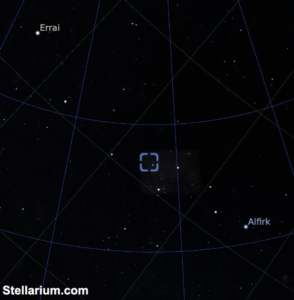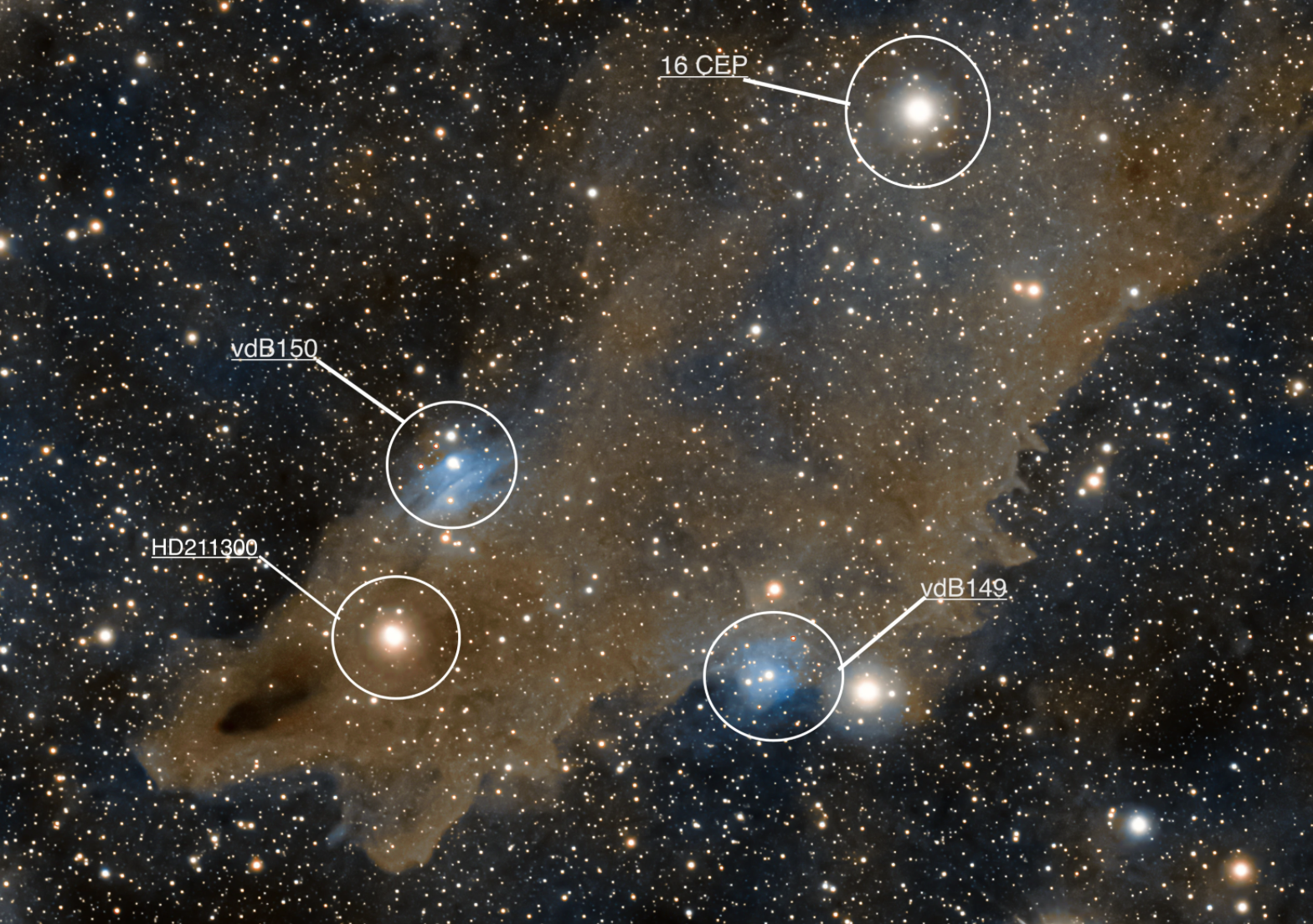
What is LDN 1235 – The Shark Nebula
LDN 1235 is a dark nebula, a type of interstellar cloud that is so dense it obscures the light from objects behind it, such as stars and galaxies. Unlike the bright emission and reflection nebulae, dark nebulae are visible primarily because they block light rather than emit it. The Dark Shark Nebula gets its name from its distinctive shape, which resembles a shark swimming through the cosmos.
Location and Characteristics
The Dark Shark Nebula is located about 650 light-years away from Earth in the constellation Cepheus. This nebula is part of a larger complex of dark clouds and is notable for its striking shape and the interplay of light and shadow within it. The nebula spans about 15 light-years and is composed of cold gas and dust.

The Mysterious Structure
LDN 1235’s appearance is marked by intricate patterns of dark dust lanes and faintly illuminated edges, giving it the appearance of a shark gliding through the deep ocean of space. This eerie resemblance is highlighted by the surrounding faint blue reflection nebulae, which are caused by starlight scattering off the dust particles in the nebula.
Observing LDN 1235
Observing dark nebulae like LDN 1235 can be challenging due to their faint nature. Here are a few tips for those who wish to observe or photograph the Dark Shark Nebula:
Choose a Dark Sky Location: To see the nebula, it’s essential to be in a location with minimal light pollution.
Use a Wide-Field Telescope or Camera Lens: The nebula’s large size makes it a good target for wide-field astrophotography. A telescope with a low focal length or a DSLR camera with a wide-angle lens can capture its full extent.
Long Exposure Times: Dark nebulae are faint, so long exposure times are necessary to bring out their details. Use a stable mount to track the stars and take multiple exposures for stacking.
Image Processing: Post-processing is crucial to enhance the contrast and reveal the structure of the nebula. Software like Photoshop or specialized astrophotography tools can help highlight the dark lanes and the faint surrounding nebulosity.
Astrophotography Tips
Capturing the ethereal beauty of LDN 1235 can be a rewarding experience. Here are some additional tips for astrophotographers:
Calibration Frames: Use dark frames, flat frames, and bias frames to calibrate your images and reduce noise.
Stacking Images: Stacking multiple images can improve signal-to-noise ratio and reveal more details.
Contrast Enhancement: Adjust the levels and curves in your image processing software to enhance the contrast between the dark nebula and the background sky.
Color Balance: Pay attention to color balance to bring out the subtle hues in the reflection nebulae around LDN 1235.
Historical Context
Discovery and Cataloging
LDN 1235 is part of the Lynds Dark Nebula catalog, compiled by American astronomer Beverly Lynds in 1962. This catalog includes over 1,800 dark nebulae, identified primarily through photographic surveys. These objects were cataloged based on their density and opacity, providing a valuable resource for studying the structure of our galaxy.
Role in Galactic Structure
Dark nebulae like LDN 1235 play a crucial role in the structure and evolution of our galaxy. They are often found in the spiral arms of galaxies, where star formation is most active. By studying these regions, astronomers can learn more about the processes that shape galaxies and lead to the formation of new stars and planetary systems.

Telescope: Sky-Watcher Evostar 72ed / Sky-Watcher 150pds Quattro / William Optics Redcat 51 V2 / Askar FRA300 Pro
Camera: Nikon D5600 / ZWO ASI 294MC Pro / QSI 583WSG Monochrome
Totale exposure: 26 hours. 20 hours RGB, 6 hours Luminance
Imaging and Processing
Shooting this object was an extremely interesting and difficult project. Together with 3 other fellow astrophotographers we took on the challenge to photograph the Shark Nebula. All of us had different telescopes and different camera’s. Making it that we had to processing 4 different types of focal lengths, differing from 250mm focal length to 600mm focal length and also different pixel scales. First, calibration all light frames in Siril was needed to align all stars and making sure that all frames could be stacked successfully. Once this was done, no nebula at all could be seen. The Shark Nebula is an extremely dark nebula and it took various tries to make a perfect processed image. Processing was mainly done in Adobe Photoshop and PixInsight.
I hope you enjoyed this blog and images about LDN1235 – The Shark Nebula
Happy stargazing! – Jimmy Keetman

